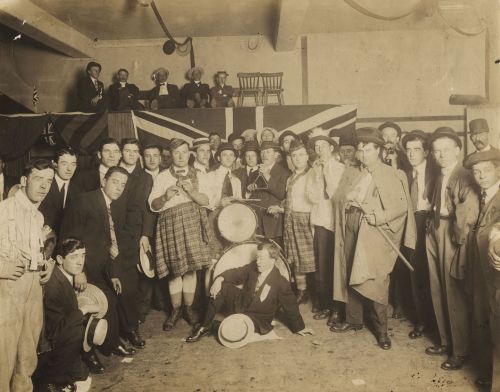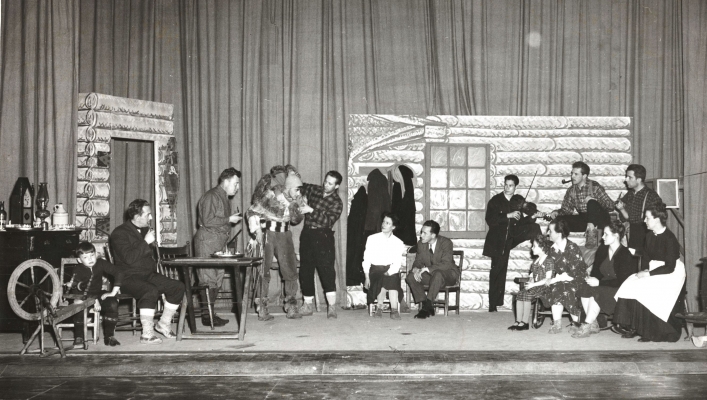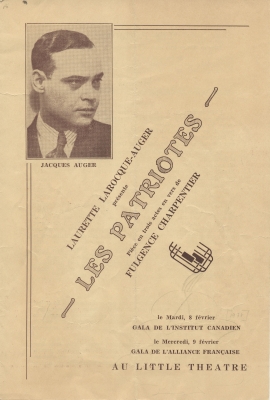Since Ottawa’s beginnings, theatre has been at the heart of the city’s cultural life. According to Marcel Fortin, no less than 489 French-language drama performances take place in the national capital between 1850 and 1913. This number is all the more impressive considering the real size of Ottawa at the time – quite small compared to metropolises like Montréal or Toronto. It is, in fact, the federal public service which provides an educated and loyal audience for the performances.
The number of theatrical productions continues to increase steadily: 894 performances between 1913 and 1930; 1,181 between 1930 and 1940; and approximately 750 per decade from 1940 to 1960. While Ottawa has several amateur theatre groups, a large proportion of these plays are staged by theatre companies from Quebec, other Canadian provinces or France. The Cercle Molière of Saint-Boniface, for example, whose actors include a certain Gabrielle Roy, participate in the 1934 Festival national d’art dramatique, winning the trophy for French drama. Productions during this period are mainly repertory theatre; local creations are scarcer.
Franco-Ontarian literature specialists Lucie Hotte and Johanne Melançon are able to count no more than forty Ottawa playwrights whose plays are performed between 1850 and 1968. Among them, Régis Roy – whose grandfather, interestingly, is one of the pioneers of Bytown, settling there in 1830 when the community is still just a logging settlement– warrants special mention.
Régis Roy is born in Bytown in 1864, the first Francophone writer native to Ontario. After studying at the Académie De-La-Salle, he embarks on a career in the federal public service, like many Ottawa writers after him. But it is as a writer that he makes a name for himself. Régis Roy is a prolific author, trying his hand at almost every literary genre: drama, tales, short stories, novels and historical works. His preferred genre is nonetheless comedy, which he explores in the play Nous divorçons! published in Montréal in 1897.
The play features a couple, Louis and Claire, who seek a divorce, a very avant-garde subject at the time. It should be noted that, until the 1960s, Canadian couples who wanted to divorce had to obtain authorization from the Canadian Senate. In the play, the challenge of divorce is approached through a play on words, with the couple’s lawyer claiming that separation is impossible because Claire would become deaf and Louis would become blind. Indeed, as Louis explains to his wife: “Claire would lose Louis, and I would no longer see Claire.”1 Fortunately, the couple has already chosen to stay together. But this final rejoinder illustrates Roy’s sharp sense of humour!
1 Régis Roy, “Nous divorçons !,” in Mariel O’Neill-Karch and Pierre Karch (eds.), Théâtre comique de Régis Roy (1864-1944), Ottawa, Éditions David, “Voix retrouvées” collection, 2006, p. 153 (translated from the original). In French, Louis and L’ouie – for hearing- as well as Claire et clair –for clearly- sound identical, which creates a very witty pun.
A group of actors, including Léonard Beaulne, in the front, holding a stick [ca. 1912].
University of Ottawa, CRCCF, Fonds Léonard-Beaulne (P198), Ph164-262.









